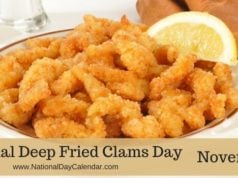
Welcome to Port Charlotte Florida – a relatively unknown gem nestled along the stunning Gulf Coast. If you’re seeking a destination that combines natural beauty, outdoor activities, and a laid-back vibe, then you’ve come to the right place.
This ultimate guide will take you on a tour of the history, attractions and natural features that make Port Charlotte a must-visit destination.
Immerse yourself in the sun-drenched beaches, where soft sands meet crystal-clear waters. Go fishing or boating along the picturesque Charlotte Harbor, known for its abundant marine life and stunning sunsets. For nature enthusiasts, the sprawling Charlotte Harbor Preserve State Park offers endless opportunities to explore Florida’s unique ecosystems, showcasing everything from mangrove forests to diverse bird species.

Sports enthusiasts will have a blast in Port Charlotte, as it serves as the spring training home for the Tampa Bay Rays. Catch a game and root for your favorite players at the Charlotte Sports Park.
Indulge in the vibrant arts and culture scene by visiting the Charlotte Players Theater or exploring the Visual Arts Center. And don’t forget to satisfy your cravings with the diverse dining options and shopping experiences that Port Charlotte has to offer.
Get ready to uncover the hidden treasures of Port Charlotte – your ultimate guide starts now.
The Compact History of Port Charlotte
Port Charlotte, Florida has a rich history, spanning from its early inhabitants to its modern development as a thriving community:
Early Inhabitants
- Paleo-Indians (10,000 BC): The first known inhabitants of the area were the nomadic Paleo-Indians, who hunted big game during the last ice age. Back then, Florida was wider and drier, and Port Charlotte wasn’t a coastal region.
- Calusa people (after 10,000 BC): As the ice melted and sea levels rose, Florida assumed its current shape and climate. The Calusa people, known as the “shell people” due to their extensive use of shells, thrived on the southwest Florida coast, with their population exceeding 50,000 when the first Spaniards arrived in the 16th century.

Florida before Spanish exploration.
European Exploration and Colonization
- Spanish exploration (16th century): The Spanish were the first Europeans to reach the area, although they didn’t establish any permanent settlements in Port Charlotte.
Early Development and Growth
- Limited development (1845 – 1950s): For nearly 100 years after Florida became a state in 1845, Port Charlotte remained largely undeveloped. Early maps show it bypassed with few farms and ranches.
- Post-WWII Development Boom (1950s): The post-World War II boom prompted the development of land in Florida. The Mackle brothers, founders of the now-defunct General Development Corporation, saw potential in the region and began developing Port Charlotte alongside other coastal areas. This marked the beginning of significant growth in the area.
Modern Port Charlotte

Charlotte Florida fisherman is catching sunset and fish.
- Unincorporated community: Despite its development, Port Charlotte remains an unincorporated community, meaning it lacks its own local government and operates under Charlotte County.
- Hurricane Charley (2004): In 2004, Port Charlotte was severely impacted by Hurricane Charley, one of the costliest hurricanes ever to hit the United States. The city experienced extensive damage and required significant rebuilding efforts.
- Thriving community: Today, Port Charlotte is the most populous community in Charlotte County, known for its beautiful beaches, diverse population, and growing economy.
Additional points of interest
- The historic Charlotte Harbor, located near Port Charlotte, has been a vital waterway for centuries, used by Native Americans, Spanish explorers, and present-day residents for fishing, transportation, and recreation.
- Historical sites like the Mound Key Archaeological State Park offer glimpses into the region’s pre-Columbian past.
Port Charlotte’s history reflects the broader story of Florida, from its earliest inhabitants to its continuous development and evolution as a vibrant community.
Today, remnants of the area’s history can still be seen throughout Port Charlotte. Take a stroll through the historic downtown area and admire the charming architecture that reflects its past. Visit the Charlotte County Historical Center to learn more about the region’s history and see artifacts from the early settlers.
This article originally appeared here and was republished with permission.














